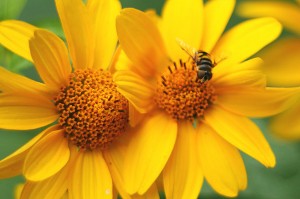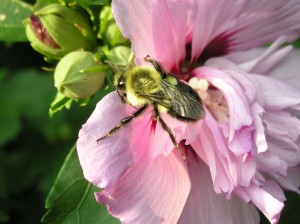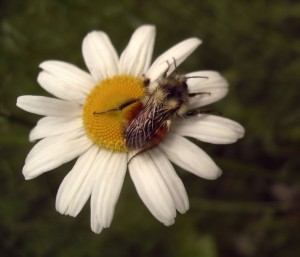Like a neon sign designed to attract customers, flowers emit electrical signals which help draw bees on the hunt for nectar.
While factors such as bright colors, patterns and tempting fragrances play a role in helping bees with their nectar-gathering duties, a study in Science Express reveals electrical signals from the blooms also help bees find and distinguish their targeted flowers.
Researchers from Bristol University’s School of Biological Sciences found that patterns of electrical signals emitted by flowers communicate information to the little pollinators.
Plants commonly emit weak and negatively-charged electric fields. As they fly through the air, bees pick up positive electrical charges. Usually when a negative electrical signal meets a positive one, sparks can fly, but in the case of the bee and the bloom, nothing is exchanged except helpful information.
“The co-evolution between flowers and bees has a long and beneficial history,” said Daniel Robert, the study’s lead author. “So perhaps it’s not entirely surprising that we are still discovering today how remarkably sophisticated their communication is.”
Another study on bees, from the University of Cambridge, suggests the contrast between flowers and their background is more important to bees than the colored vein patterns on pale flowers.
While flowers with patterns of varied color are more attractive to bees and provide them with guidance as to where to find nectar, researchers found little evidence to suggest bees specifically prefer the striped flowers.
The study revealed that solid red flowers reflect very little light and aren’t as interesting for the bees.
When compared with red blooms, researchers found flowers with an ivory background seemed to have the greatest effect on the bees. They think that’s because the ivory color contrasted better with the background than the red flowers.
The study also points out that bees were able to tell the difference between solid ivory and veined flowers, but had no preference between the two. But, the researchers did find that both the solid ivory and veined flowers were much more popular with bees than the solid red flowers.
“Venation patterns (the distribution or arrangement of a system of veins on a flower) might be prevalent in nature because they can be useful nectar guides, particularly when they also increase flower visibility. But it appears that the color contrast of a flower with its background has a greater influence on bee preference,” the research team concluded in a released statement.
























Comments are closed.